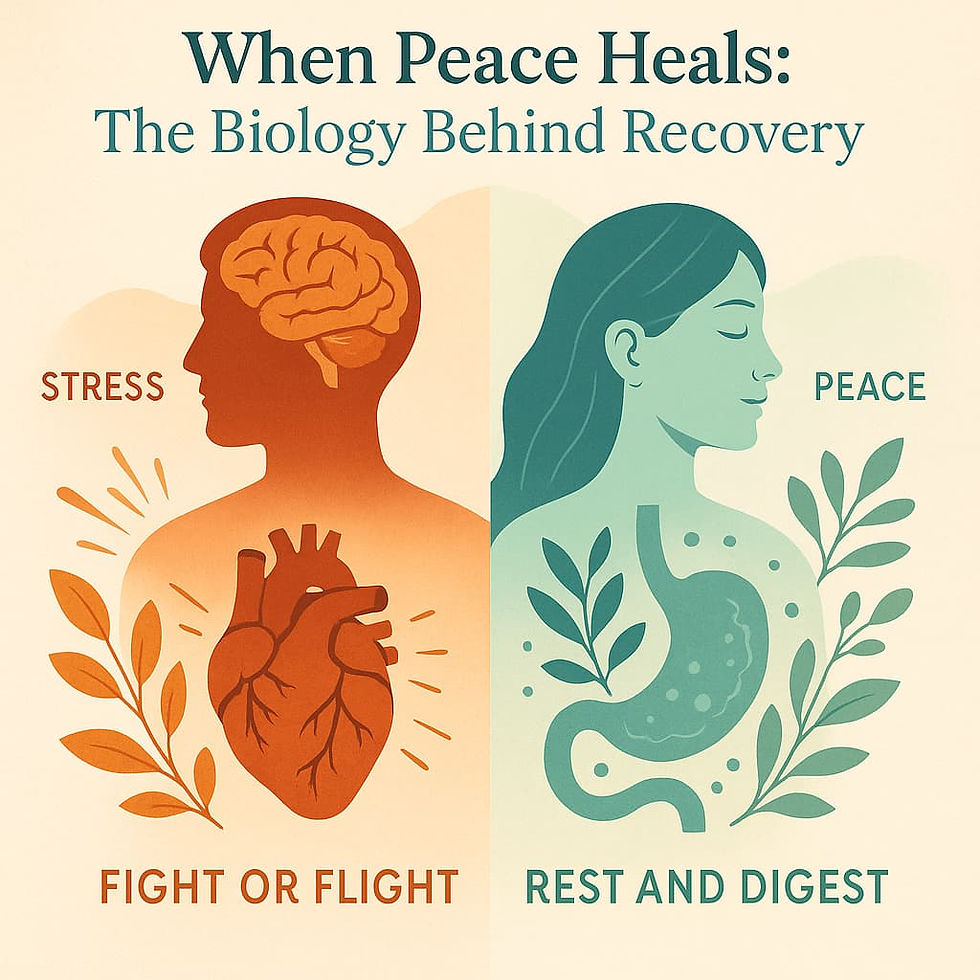How Acupuncture Works: The Science Behind the Needle
- Clark R. Mollenhoff III M.Ac., L.Ac.

- May 3
- 3 min read
Updated: Jul 17

Acupuncture often enters modern conversation shrouded in mystery. Terms like qi, meridians, and energy flow may sound poetic—or implausible—to those steeped in the language of science. Yet for thousands of years, this ancient therapy has quietly demonstrated remarkable effects on pain, illness, and emotional well-being.
Today, as research deepens, it is becoming increasingly clear that acupuncture is not mystical, nor is it simply a placebo. Rather, it interacts with the body's most intricate systems—nervous, endocrine, immune, and circulatory—in ways that modern biomedicine is only now beginning to fully describe.
This article explores how acupuncture functions inside the body, based on contemporary scientific understanding. It is not a reduction into chemistry and nerves, but a translation—allowing ancient wisdom to be viewed through the lens of modern physiology.
The Nervous System: Acupuncture's First Messenger
The moment a needle enters the skin, a cascade of neural activity begins. Sensory nerve fibers—particularly A-delta and C fibers—are activated. These convey information not only about pain, but about touch, temperature, and subtle mechanical forces.
Once activated, these nerves send signals into the spinal cord and up to the brain, influencing perception and regulating responses. According to the Gate Control Theory of Pain, this can inhibit pain signals, reducing their intensity.
In chronic pain, the brain’s sensory maps can become distorted, causing normal sensations to be perceived as pain. Acupuncture influences brain regions like the somatosensory cortex and limbic system, helping recalibrate this perception. It teaches the brain to experience the body in healthier ways.
Neurochemical Release: Unlocking the Body’s Pharmacy
Acupuncture's neural activation also triggers biochemical responses:
Endorphins and enkephalins: Natural opioids reducing pain and inducing well-being.
Serotonin and norepinephrine: Neurotransmitters regulating mood and inhibiting pain.
GABA: A calming neurotransmitter reducing nervous system excitability.
These substances affect local tissues and whole-body states. Moreover, acupuncture can increase opioid receptor sensitivity, enhancing the body's natural pain control mechanisms and producing long-lasting effects.
Autonomic Nervous System: Restoring Balance
Acupuncture powerfully impacts the autonomic nervous system (ANS), which maintains homeostasis. By shifting the balance toward parasympathetic (rest-and-digest) activity, acupuncture promotes relaxation and reduces cortisol, the stress hormone.
Increased Heart Rate Variability (HRV) following acupuncture reflects this improved balance, indicating greater resilience and adaptability. In simple terms, acupuncture helps the body return to a state where healing and recovery can take place.
Immune System Modulation: Bridging Inflammation and Healing
Locally, acupuncture creates microtrauma, recruiting immune cells and releasing healing signals. Systemically, it modulates immune responses:
Reducing pro-inflammatory cytokines (TNF-α, IL-6)
Increasing anti-inflammatory cytokines (IL-10)
Enhancing natural killer cell and regulatory T-cell activity
By neither suppressing nor overstimulating immunity, acupuncture helps recalibrate inflammatory processes and support balanced immune function.
Circulation and Connective Tissue: Moving Blood, Moving Life
"Moving qi and blood" describes effects now visible through modern research. Needling improves microcirculation, enhancing oxygen and nutrient delivery. It also affects connective tissue planes, where fibroblasts respond to needling by altering cell signaling and tissue dynamics.
Acupuncture thus engages the body's architectural matrix, influencing how tissues heal, how inflammation is resolved, and how mechanical tension is managed.
Endogenous Peptide Pathways: Natural Regenerative Medicine
Beyond classical neurotransmitters, acupuncture has been shown to stimulate endogenous peptides involved in healing and repair:
Substance P (SP) and CGRP: Modulated by acupuncture to regulate pain and vasodilation.
Brain-Derived Neurotrophic Factor (BDNF) and Nerve Growth Factor (NGF): Upregulated to promote nerve healing and neuroplasticity.
Vascular Endothelial Growth Factor (VEGF): Stimulated to encourage angiogenesis and tissue repair.
Neuropeptide Y (NPY) and opioid peptides: Modulated to regulate stress, promote calm, and influence immune balance.
Acupuncture activates the body's own peptide-driven healing systems, demonstrating its role as a form of natural, integrative regenerative medicine.
Context Matters: Synergizing with the Mystery of Healing
While acupuncture's effectiveness is not dependent on placebo, it also embraces the reality that placebo is an essential part of all medicine. The act of receiving care, the presence of trust, and the symbolic and mythological depth of acupuncture activate profound healing responses.
This is not deception. Rather, acupuncture synergizes its physiological mechanisms with the power of meaning, expectation, and relational depth—amplifying therapeutic outcomes beyond what isolated biochemical pathways could achieve alone.
The Unified Picture: An Ancient Therapy in a Modern Systems Framework
Acupuncture works not through a single mechanism but through many:
Neural modulation
Neurochemical balancing
Autonomic regulation
Immune recalibration
Circulatory and connective tissue influence
Endogenous peptide-driven healing pathways
Psychosocial and symbolic engagement
Rather than forcefully manipulating biology, acupuncture restores intelligent regulation across bodily systems. Its traditional language of qi and meridians can be understood as early efforts to describe this interconnected reality.
Ultimately, acupuncture offers a timeless lesson: healing is relational, dynamic, and intelligent. Its mechanisms, both specific and synergistic, reflect not superstition, but the body's profound capacity to restore itself when given the right invitation.




Comments